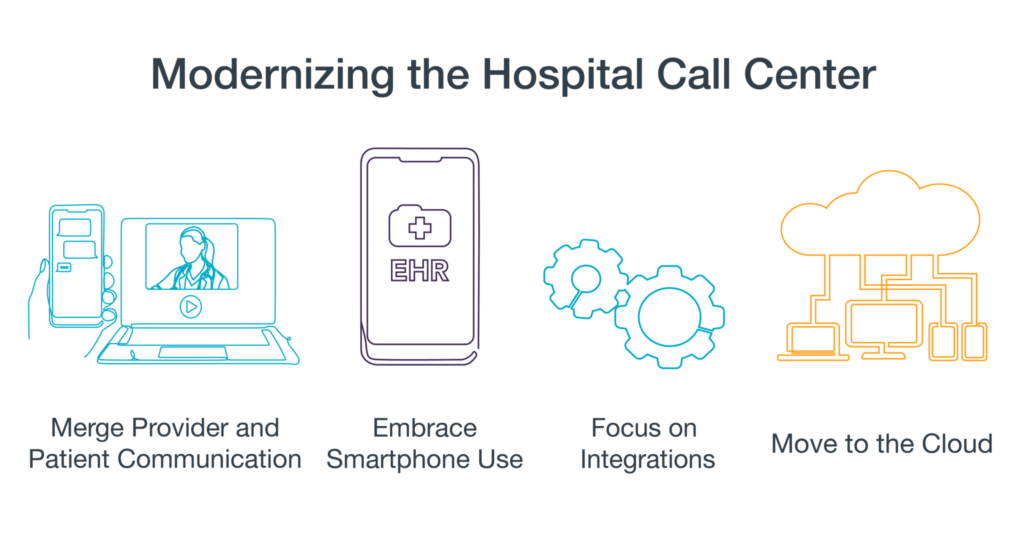Event
Why Integrations Matter for Clinical Communication
Watch NowTABLE OF CONTENTS
By: Jessica Levco
NOTE: This article originally appeared in the December 2022 issue of Healthcare Contact Center Times.
Even though hospital call centers exist to serve patients, that’s not their only purpose. A well-run hospital call center can decrease the manual burden on operators, reduce burnout for clinicians and eliminate communication errors.
But one problem: A lot of call center technology is stuck in the 1990s.
Ben Moore, Chief Product Officer at PerfectServe, thinks it’s time to modernize the call center and connect the center (and its operators) with a broader clinical communication ecosystem to support changing patient expectations. Here’s a look at how to do that:

Currently, 80 percent of call center systems are on premise. Moore says, “cloud based call center solutions are the only way to connect all stakeholders across all care locations properly.”
“The cloud is a utility, like water or electricity,” Moore says. “The cloud is reliable enough to do mission-critical healthcare. We’ve seen EHRs move to the cloud, so there’s no reason why your call center can’t, too.”
Also, Moore says, “that keeping your call center systems on-premise is risky.” During his career, he’s seen a fan blow up on the PC server inside a hospital’s basement, which meant the hospital lost its ability to communicate with incoming ambulances.
Moore says it’s time to advance from “patient contact center” to a “patient engagement center.” This gives operators more time to deliver valuable, personalized patient interactions, instead of struggling with things like patching clinician-to-clinician calls.
One way to do this is to focus on two-way integration with the hospital’s EHR. Here’s what that looks like:
“It’s more important to focus on integration than analytics and performance,” Moore says. “Good integration with the clinical directory and good integration with the doctor’s on-call scheduling platform are two main things to help your call center work more efficiently.”
Moore says tools for clinicians (core clinical communication solutions) haven’t kept up with patient facing or consumer technology. When you invest in systems and platforms, make sure your platforms allow physicians and patients to communicate with each other.
“You want to get a platform that allows everyone to be connected in the patient’s journey,” Moore says. “You also want to make sure this is incorporated into your EHR. This is important because you don’t want your call center agents to communicate messages back and forth between the patient and their doctor. A single-messaging platform should be accessible to all.”
About 72 percent of physicians use smartphones, but the core technology they’re using hasn’t kept up to fully leverage the capabilities of smartphones. Moore says, “It’s important to select a platform that allows doctors to confirm that messages sent to them have been confirmed and delivered.”
“It’s important to practice safe healthcare communications, especially for inbound trauma,” Moore says. “You want the call center agent to know the whole team saw the message.”
And whatever you do, ditch the pagers. Moore knows of several hospitals that rely on a “park and page” method, where doctors get pages from call center agents. Agents refer to this as a “park and pray” method because they’re never 100 percent sure if the doctor got their message.
Pagers were developed in the 1950s, by the way.
Learn more about PerfectServe’s Operator Console solution here.